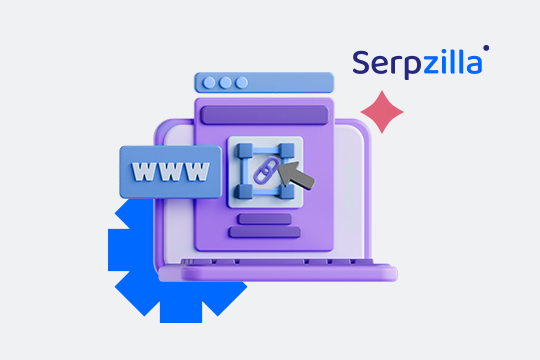SEO is the kind of science where new strategies rise and fall very often. It is a field of constant experimentation and hit or miss. Rules change rapidly, search engines refine their ranking algorithms constantly, and it is pretty much impossible to keep up with every single shift on your own – not to mention to try out every single new tactic.
That is why many SEO specialists rely on competitive analysis. When you dissect what your competitors do well and where they’re vulnerable, you can craft a strategy that is backed by data and actual use cases – one that leverages your unique strengths.
In this article, we’ll guide you through a detailed, step-by-step process for performing a comprehensive SEO competitive analysis. We’ll describe strategies, check out tools you can use for each step, and talk about how to transform the data you acquire in the process into actionable steps to improve your own site.
Step 1: Define Your Top SERP Competitors
Why It Matters:
Before you start your analysis, it is important to define your competitors . If you pick the wrong sites to analyze, the data you extract will not be useful to you. Either you won’t be able to apply their successful strategies because of various limitations or they simply won’t work for you because your circumstances are different.
Things to Do:
Check Their Niche Relevance: Your competitors should come from similar backgrounds: similar products or services, similar company sizes, marketing budgets. Ask yourself whether your user would ever be in a situation where they’d be choosing between you and them, or is the choice irrelevant? If the dilemma is real, you’ve found your competitor.
Visibility: These are the companies who appear at the top of SERPs for keywords you want to optimize your site for. If a site appears on the first SERP 4–5 times out of the top 10 keywords you’re aiming for, it’s a good sign that this is a realistic competitor.
SERP Feature Presence: Check competitors appearing frequently in SERP features such as featured snippets, AI Overviews, image packs, and video carousels.
Realistic Comparison: Your competitors should realistically be in the same league as you. If you’re a small local store selling farmers’ produce and local specialties, country-wide retail chains are not your competition.
Step 2: SERP Features Analysis
Why It Matters:
Appearance in “zero” positions, such as Featured Snippets, People Also Ask boxes, or AI Overviews, doesn’t necessarily mean that your competitors are on the first SERP page for this particular query. However, Google generally tends to select sites for its SERP features that already rank well for related keywords.
It also usually takes some extra effort in terms of optimization to show up in SERP features. SERP features drive significant traffic and visibility, often even more than traditional organic rankings. According to Engine Scout, Featured Snippets and knowledge panels together can capture 42% of all clicks on a search results page.
They also help you gain visibility in “zero-click” searches. If a competitor often appears in SERP features, they aren’t just doing something right. Most importantly, they are among the first to do it, since these features are still a novelty to many websites that do SEO.
Things to Do:
When analyzing competitors, look for their presence in:
- Featured Snippets: Do they appear in the quick-answer boxes? What type of content (lists, tables, definitions) are they using to secure this spot?
- Knowledge Panels: Are they recognized as authoritative entities by Google?
- People Also Ask (PAA): Do competitors frequently show up in these expandable Q&A sections?
- Video Carousels: Are they leveraging YouTube or video content to gain visibility?
- Image Packs: Do they have optimized images ranking in SERPs?
- Local Packs (if relevant): Are they listed in the local 3-pack for important search terms?
Tools: Semrush’s “SERP Features” filter or Ahrefs’ SERP overview.
Step 3: Organic Traffic Estimation
Why It Matters:
When you can compare organic traffic for several sites that take up top SERP positions, you can realistically judge traffic potential in your niche. It also becomes clear how well you are performing in terms of traffic, how much effort you need to catch up if you’re lagging behind, and who the market leaders are. Keep in mind, just looking at the traffic numbers is not enough. It’s true that good traffic volume signals strong keyword coverage, effective content, and healthy backlink profiles. However, you should also assess traffic quality and relevance.
Things to Do:
- Check estimated monthly visits: Use tools like SimilarWeb, Ahrefs, or Semrush to see how much organic traffic competitors are attracting.
- Analyze traffic distribution: Look at whether traffic comes mainly from informational, commercial (including branded) or navigational searches.
- Identify seasonal or trending spikes: Note if competitors benefit from seasonal demand or trending content that inflates their numbers.
- Compare relative traffic: Draw comparisons between competitors to understand where you stand in the overall market.
- Assess traffic quality: Check bounce rates, dwell times, or engagement data (if available) to see if traffic actually converts.
Tools: Semrush (Traffic Analytics), SimilarWeb, Ahrefs (Site Explorer), Google Trends (for seasonality).
Step 4: Keyword Research & Ranking Analysis
Why It Matters:
Even with all the SEO shifts in the last few years, keywords remain the foundation of every SEO strategy. When you analyze the keywords your competitors rank for, you’ll discover multiple things you can later employ in your own SEO. Which queries drive their traffic, which topics resonate with your shared audience, what opportunities you still haven’t used, which tactics show no result?
Competitor keyword analysis also reveals whether their success relies on high-frequency (HF) queries, long-tail variations, or niche-specific terms, which will help you refine your own keyword targeting.
Things to Do:
- Identify top-performing keywords: Use SEO tools to list the queries bringing competitors the most organic traffic.
- Classify keyword types: Separate high-frequency (HF), low-frequency (LF)keywords to see where competitors put their focus. You can also filter keywords by difficulty score (how hard it is to rank for them).
- Spot ranking gaps: Compare their keyword set with yours to find working keywords they target but you don’t.
- Check traffic drivers: Prioritize keywords that generate them significant organic traffic and that you could realistically rank for.
- Evaluate search intent alignment: Understand whether competitors are ranking for informational, navigational, or transactional queries.
- Track keyword volatility: Note if competitors’ rankings fluctuate often or if they have secured stable positions.
Tools: Ahrefs (Site Explorer → Organic Keywords), Semrush (Keyword Gap, Organic Research), Moz Keyword Explorer, Serpzilla Keyword Competitive Analysis Guide.
Step 5: Content Analysis
Why It Matters:
Content is another cornerstone of SEO today. It’s what defines you and lets you stand out, helps you show your unique brand, style, and tone of voice – it’s what people remember your brand by. Whatever you do for SEO, if your content isn’t worth your users’ attention, all other efforts will be in vain.
Content is also key for organic visibility, user engagement, and conversions. When you check out what your competitors do content-wise, you can spot formats and strategies that work (or don’t work), and even get inspired to create something unique for your niche. The sky-scraper technique – or identifying which content works and doing it better – is one of the key white-hat SEO practices.
Things to Do:
- Map content types: What type of content prevails on your competitor’s website? Is it blog posts, product pages, landing pages, videos, or infographics? What’s the distribution of content types? What are they obviously promoting?
- Check content depth: Check the word count of their successful pieces, their structure, and use of visuals: long-form vs. short-form, surface-level vs. in-depth.
- Analyze publishing frequency: Do they publish often? If yes, are there any obvious patterns, e.g., publishing at a distinct time can mean they target certain user behaviors, so you should find out which.
- Look for evergreen vs. trending content: Understand if their growth relies on steady evergreen pieces or time-sensitive topics.
- Measure engagement signals: Use social shares, comments, and backlinks to see which content pieces perform best.
- Review topical coverage: Determine whether competitors cover the entire customer journey or focus narrowly on certain stages.
Tools: BuzzSumo (content performance), Ahrefs (Top Pages report), Semrush (Content Analyzer), Google Search Console (for your own benchmarking).
Step 6: On-Page & UX Factors
Why It Matters:
A bad user experience can kill even the most successful SEO efforts. Even if you’re good at link building, if your content is unique, and if your coverage is great, it can all turn out to be futile if your bounce rates and dwell time show bad figures. Analyzing your competitors’ UX quality can be an eye-opener. You visit them as a regular user, free from your “own-project-bias”, and you’ll be able to notice bad UX. It’s also fair to sneak a peek at what they’re doing well and replicate good UX ideas!
Things to Do:
- Check their site structure: Examine how competitors organize categories, subcategories, and internal linking.
- Test navigation: Is the site easy to explore? Are important pages accessible within 2–3 clicks from any other page where you may land?
- Check for content enhancements: Look for supporting elements like FAQ blocks, tables, collapsible and clickable expansions (accordions), and CTAs that improve usability.
- Review their trust signals: See whether competitors use reviews, testimonials, star ratings, trust badges, or security indicators.
- Assess mobile UX: Open their site on mobile. After all, in 2025, about 60% of all search traffic is mobile. Is it still convenient to use the information and to browse the site? Are their fonts, layouts, and formatting mobile-friendly?
- Analyze their conversion pathways: You need to understand whether landing pages are optimized for user flow and goal completion. Is it hard to navigate to a purchase from the landing page?
Tools: Screaming Frog (site structure visualization), Hotjar (UX analysis), PageSpeed Insights (for mobile usability), Chrome DevTools (manual inspection).
Step 7: Technical SEO
Why It Matters:
Technical SEO, just like user experience, can either boost all of your other SEO efforts or zero them out. If Google can’t crawl, index, and understand your site efficiently, it won’t give you any SEO points, no matter how good your other SEO aspects are. When you analyze your competitors’ technical setup, you can identify the best practices they follow and gaps in your own performance that might be holding you back.
Things to Do:
- Check page speed: Use tools to compare loading times and Core Web Vitals performance.
- Review mobile responsiveness: See how competitor sites perform on different screen sizes and the quality of their cross-platform features.
- Inspect URL structure: Look for clean, readable URLs with keyword relevance. If you look at the URL in their address bar, is it clear what’s on the page?
- Verify secure connections: Confirm they’re using HTTPS and have valid SSL certificates.
- Look for structured data: Analyze whether they use Schema.org markup for products, articles, FAQs, etc.
- Assess internal linking quality: Check how well they connect pages to guide crawlers and users.
- Evaluate crawlability and indexability: Use tools to see how easily search engines can access and index their pages.
Tools: Google PageSpeed Insights, Lighthouse, GTmetrix, Ahrefs (Site Audit), Screaming Frog, Rich Results Test (for schema), Mobile-Friendly Test.
Step 8: Backlink Profile Analysis
Why It Matters:
A solid backlink profile is still the backbone for rankings, trustworthiness, and authority. Completing this task alone will give you a fair picture of what your competitors are doing right, what they’re missing, and what successful tactics you can copy from them and replicate for your site. A competitor backlink profile analysis will give you many things: links that work, links that you don’t have, links that you have but may no longer work, links to avoid, and link-building strategies that have (or don’t have) the effect you need.
Things to Do:
- Check the total number of backlinks and referring domains: See how many links your competitors have and from how many different sources.
- Evaluate link quality: Look at the domain authority (DR/DA), relevance, and trustworthiness of their referring domains.
- Analyze anchor text usage: what anchor types are they using? Is the distribution natural? Are there any prevailing types?
- Spot toxic links: Do they have spammy answers in reddit threads linking to them? How quickly do they get rid of toxic links?
- Track link velocity: Assess how quickly competitors are gaining new links: Is their link-building ongoing or stagnant? Do they have viral spikes? Do they have seasonality spikes?
- Identify link sources: See if they’re earning links through guest posts, forums, digital PR, partnerships, or niche directories.
Tools:
- Ahrefs (Backlink and Referring Domains reports, Link Intersect tool), Semrush (Backlink Audit, Competitor Analysis), Moz Link Explorer, Serpzilla Blog Resources:
Step 9: Local SEO
Why It Matters:
According to SEOTribunal, approximately 46% of all Google searches have local intent today. In the US alone, over 5.9 million “near me” keywords generate around 800 million searches per month. This should illustrate both the power and the potential of local SEO. If your business caters to a specific geographic area, gaining local visibility is a must, and the best way to find out how is by checking your direct competitors out.
Things to Do:
- Check for Google Business Profiles: See if competitors have well-optimized Google Business (formerly GMB) listings, with phones, addresses, pictures, relevant pages, etc.
- Analyze reviews: Look at the quantity, recency, and sentiment of customer reviews. Do they come across as natural or fake?
- Inspect local citations: Identify listings in local directories, review sites, and business listings.
- Look for map pack rankings: Search local keywords and see if they appear in the 3-pack map results.
- Evaluate location-based content: Check if their site includes location pages, directions, or geo-optimized content.
- Assess local backlinks: Look for links from local news outlets, blogs, chambers of commerce, or events.
Tools: Google Business Profile, BrightLocal, Whitespark, Moz Local, Google Maps, and manual SERP inspections for local queries.
Summarizing Key Findings and Insights from the Analysis
Once you’ve completed all the steps in the list above, you’ll have gathered extensive data on your competitors. Now comes the most important step: how to use it to your advantage?
All of your findings can be grouped into four large groups:
- Successful tactics that both you and your competitors are using
Proving that these particular tactics work and you should continue with them.
- Successful tactics that you aren’t using but your competitors are
The most important group. These are your missed opportunities, be it link-building prospects that don’t yet link to you or content formats that perform well but you aren’t using yet. These are your gaps – your blank spots that you need to focus on.
- Bad practices that both your competitors and you are following
Maybe you thought that it was just you, or an SEO practice is taking time to get into full swing? If you find something similar also isn’t working for your competitors, it’s a solid sign you should discontinue it immediately.
- Bad practices your competitors are following
It’s great when you can learn from mistakes that aren’t your own because it costs you nothing.
Things to Do with Your Analysis Data:
- Identify weaknesses to exploit: Look for gaps in your competitors’ strategies: poor UX, slow site speed, weak mobile optimization, thin content, etc. You should use them as opportunities to offer something superior to your audience (and theirs).
- Spot keyword opportunities: Find high-potential keywords your competitors rank for but you don’t. Add these to your own targeting plan.
- Improve content coverage: Adapt successful content formats or topics your competitors use, but make yours deeper, more original, or more engaging.
- Refine your technical SEO: Address issues that competitors have already solved (like Core Web Vitals or structured data), or go beyond with better performance.
- Close the backlink gap: If you find domains that link back to your competitors but not to you, reach out and see if they can link to you as well.
- Reevaluate your SEO priorities: Based on your findings, you may need to shift focus – for example, investing more in local SEO, video content, or long-tail keyword targeting.








